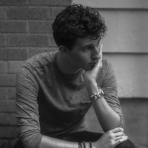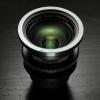Search the Community
Showing results for tags 'Photochemical'.
-
I shoot with expired film quite a lot. As a matter of fact, I would say that it's my go to. My favorite stock I've ever shot with is hands down Kodak EXR 5245 50D. I have lately realized, however, that there are a few realities about shooting on expired that I need to come to terms with quickly. It’s unreliable, it’s in short supply, it’s going extinct, and no professional production wants their investment shot on expired film. I need to move on, but frankly, I have always had a visual distaste for VISION3. I want to further pursue something I've only ever experimented with but never fully committed to in the past: emulating the photochemical characteristics of older Eastman fine grain film stocks by experimenting with exposure, density, and processing using modern Kodak film. For reference, I most often shoot on 2-Perf Techniscope with the original line of Basuch & Lomb Baltar lenses dated at the 1940s. The two Eastmancolor stocks I am most interested in trying to emulate are ECN 5248 25T (1952-1959) and ECN 5250 50T (1959-1962). About a year ago I did a short experiment on 35mm with Baltar lenses where I shot a few short reels of footage on VISION3 500T using ND filters in direct sunlight outside and had them exposed and processed in different ways. I then had them scanned in 12-bit HDR and brought them into DaVinci to level out all the footage and see how my end products differed. The four types of footage I got were underexposed one stop and developed at box speed, underexposed two stops and developed at box speed, exposed at box speed and underdeveloped one stop, and exposed at box speed and underdeveloped two stops. After leveling out all my footage in Resolve, I was extremely disappointed in the results. Once normalized with HDR tools in DaVinci, all the underdeveloped footage looked nearly identical to a standard exposure and development. And the underexposed footage just had crushed blacks with very little discernable differences other than that. I considered it a failed endeavor and steered clear of these kinds of experiments again after that. Top visual inspirations: 5248: Rear Window (1954) The Ten Commandments (1956) Vertigo (1958) Ben-Hur (1959) Rio Bravo (1959) 5250: Spartacus (1960) The Magnificent Seven (1960) West Side Story (1961) Lawrence of Arabia (1962) It’s a Mad Mad Mad Mad World (1963) Assuming that the 4k and 1080p blu-rays of the previous film were scanned from the negatives themselves and not the print, I will take it that what I've seen is a quality representation of the stocks in question. My eyes often roll when people talk about footage looking "vintage" "old" or "film-like". Mostly because this could refer to over a dozen different visual aspects in one's footage, and what invokes the feeling of "filmlike" to one person may differ from another. For the sake of this experiment let’s ignore aspects such as lens choice, format size, granularity, lighting contrast, production design, and (for the most part) color scheme. Let’s instead talk about the photochemical qualities of the negative itself. I mostly associate the Eastmancolor look from the mid 50s to the early 60s with neutral to muted highlights, rich and deep blacks, with the density and dynamic range that was available with those stocks at the time. I'm young and an amateur in this field, so I don't understand film on a more in-depth level like so many others hear. But firstly, I'm curious to know what the distinction between film density and dynamic range is, cause I can't quite make heads or tails of it. I am hoping someone with lots of (or any) experience with celluloid, the photochemical process, and the visual evolution of film over the decades can chime and and possibly steer my ventures in the right direction. THE 2383 QUESTION: Small update. During my writing of this post a friend of mine found an interesting video and vimeo and shared it with me. He suggested it as a possibility for me to shoot with 2383 in camera with lots of sunlight and that if developed using ECN-2 and given a simple color correction, the end result may be something close to what I am after. It is difficult for me to discern whether what I like so much about this clip is due to the 2383 stock or if it is just the hard tungsten lighting. I don’t currently have the time or funds to properly run a test myself but I’m putting some consideration into shooting some footage with 2383 in camera rated at 6 ASA in the cloudless sunlight and having it cross-processed using ECN-2. I can get a good 12-bit HDR scan and see if what I’m left with retains the photochemical qualities I have in mind. This clip does remind me very much of the 5250 stock—more so than most other emulations of vintage film do. But as I said, it could just be the hard tungsten lighting. I'm not certain.
-
Hi, I have a question regarding a specific look that I’ve never quite been able to pin down. I’ve surmised it to be a result of scanning a printed positive. The look I’m referring to can be seen in the bonus materials of both The Master (2012) and Inherent Vice (2014). It’s mostly noticeable in night interiors, dense, crunchy blacks, and ghostly, halated highlights. The other films that I’ve noticed this quality in have been older, and it would make sense if a negative was not available for restoration, and instead a print was scanned. A DP buddy of mine had told me in the past that you can’t really scan a print because “there’s no information,” but I’m wondering if that’s what’s contributing to the quality of this look I’m referring to. I recently read an interview with DP Marcell Rev where he states that they tried scanning positive prints as a test for the Euphoria season 2 look. Wondering if I can get some input here on what I think I’m seeing. Has anyone scanned a print before, and does it have a specific quality? Providing some links for reference: (Doris sitting on stairs) (house party stuff at 1:00) https://www.lecinemaclub.com/now-showing/entretanto/ (house party stuff) Best,
-
What is the range of prices in USA or EU for a 2:30 min short film? I ask a lab in Greece and they told me ONLY the cost of the chemichals is 6.000$ - 9.000$ !!!
- 6 replies
-
- photochemical
- price
-
(and 2 more)
Tagged with:
-
First post on this forum. I must say, having never actually worked with film before, I'm glad I found this website. Very informative. DISCLAIMER: Never having worked with film, my knowledge comes entirely from the internet, no hands on experience. So if I say anything that sounds absurd, just let me know. Having always used digital cameras, I want to shoot a movie on Super 16mm film, and have it finished on 35mm film. I've been trying to work out the workflow to get from the exposed negatives to that final print. I want to have it photochemically color timed, preferably without ever having a Digital Intermediate. Now, if I were shooting on 35mm, I would simply color time, make the inter negative, and make copies from there, all analog. But with super 16, there is the sticky problem of having to blow it up to 35mm, and from what I've read, there are many ways to go about this. There are several discussions already on this forum, but most of them are over 10 years old, and the technology seems to have changed rather significantly since then. I have an idea for some possible workflows, but I don't know if they would actually work the way I want them to or not. One of them is to edit the 16mm film together, have it color timed, then optically blown up to 35mm, but I'm not sure if the colors would translate well (I've read conflicting statements, but some say that an optical printer can't reliably transmit the colors, meaning it might have to be retimed.) If that were the case, I could have it edited, optically blown up to 35mm, then color timed, but that adds the cost of working with more 35mm in the process. For another option, and I wouldn't really mind this as long as I didn't have to digitally alter the colors, but I could edit the 16mm film, color time it, then data scan it at 4k(Not that much more expensive than 2k) then downscale it to 2k(or not, if printing 4k weren't much more expensive, but I don't know.) and have it printed to 35mm film. The problems with that, however, after it was scanned, I don't know if you would have to digitally alter the colors, or if the direct scan can be printed back without any processing. If it were the case that I would have to mess with the colors digitally anyway, then another thought was that I could edit the 16mm film, scan it without color timing, print it back to 35mm film, then photochemically color time that copy. But, that might be absurd. I don't really know, but I feel like after it was scanned, then printed, there might be some information taken from the film that makes photochemical color timing less effective, since you're just working with what a digital printer put on it, not the original analog goodness. That's a bit of a book, so I'll summarize my specific questions: 1. Assuming both processes were done properly, which would be less expensive, optical blow up, or scanning then printing back to film? (I have no reference for cost for digital printing or optical blow up. As far as I know, in this day and age, one could be far cheaper than another.) 2. Assuming both those processes were done properly, which do you think would give the best results? (Knowing that I want a photochemical timing done.) 3. Will an optical printer transfer the timed colors properly, or would it have to be timed again? 4. Will a scan of an already color timed print properly transfer the colors when printed back to film? Or would the colors still have to be digitally altered before printing. 5. Can and untimed scan that has been printed back to film still be photochemically color timed, or is that absurd? 6. Sort of related to the first question, but any reference as to how much printing 2k and 4k digital to film would cost? I can't find any information on the cost like you can with scanning. Also, specific costs of the optical blowup. I feel like some people are going to ask, "Why not just use a digital intermediate, instead of photochemically color timing? it would give you much better results, and be cheaper", and they're probably right, but it's just a hands on artistic thing. I'm relatively young, and grew up in a world that is entirely digital. Watching actual 35mm films at a theater is like a distant childhood memory, as most theaters have long been digital. And making movies with digital cameras is all I have ever done, but quite frankly, I'm at a point where I would like to create movies the same way my favorite movies from decades past were created, even if it slightly compromises visual clarity.
-
Hello everyone, I have researched online and can't come to any solid conclusions about how sound design and/or mixing is done when you're working optically. For instance: I'm making a movie and seriously considering taking it the full photochemical route, ie. shooting on 35mm scope, processing the film at Fotokem, getting a work print made (no DI), cutting the film on a flatbed, conforming the negative, timing the answer print, and striking a release print. The idea is to keep my movie completely off a computer. But the thing I can't seem to wrap my brain around is the audio part of the process. How do I sync the separately and digitally recorded dialog to my work print? How do I mix in the music I want? Most importantly, the sound effects? I tend to have substantial sound design in my films, sometimes 150 tracks or more, and spend around 80% of my post production process on sound. Is there a way to do this optically? Should I just go with a DI? I hear a lot of terms like sepmag, and 35 sound mag, but I'm not really sure what they are or how you edit with them. Thanks in advance for your help. Colin
-
Greetings, I've been searching this site for days trying to dig up information on the best practices of doing a photochemical project. I would like to do my next project on film, start to finish. I would like to edit workprints, and learn to conform a negative. I would like to go through the process of optical audio on answer prints. I understand that in this day, it is a practice that is generally not done. I am familiar with the D.I. process and how those types of edits get back out to film, but I am less familiar with the analog side of the art. If there is a book (surely?!) or other resource that could help me along, that would be welcome. Please see if my understanding so far is correct: 1. shoot principal on film 2. send to lab for processing 3. get one-line/timed print (this is the workprint) <-- Audio is recorded to 16mm mag stock at this point from origial source? 4. edit workprints to make a complete project 5. create internegative?? 6. create answer print? I don't really understand this A/B roll thing 7. conform negative to final answer print using edgecodes 8. release print struck from conformed negative? 9. I can always have a conformed (or original for that matter) negative scanned if I want to go digital... I'm sure thats wrong. But it's a start. I have access to 2 Steenbecks (16mm), 4 gang syncros, hot splice, tape splice, rewind tables. I own a 16mm projector with optical sound, but it may be mono only? Finally about the cost; processing and workprints seem to be about $50 more expensive than scanning. Thats fine with me. Am I dumb for trying to learn this stuff hands on? Thanks for your help.





